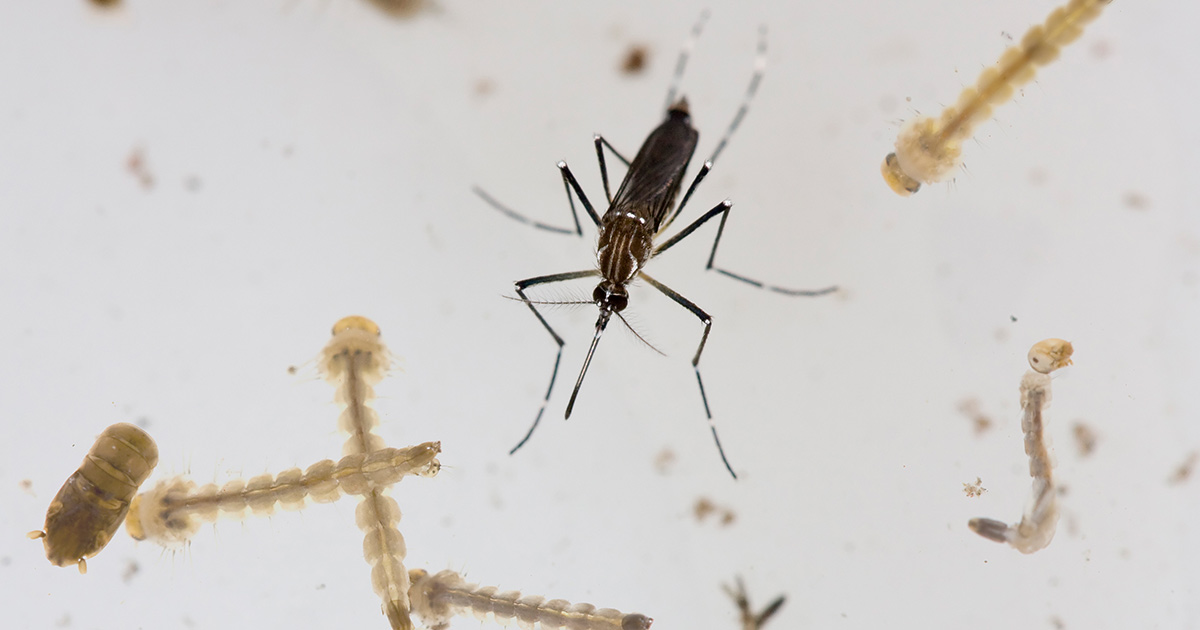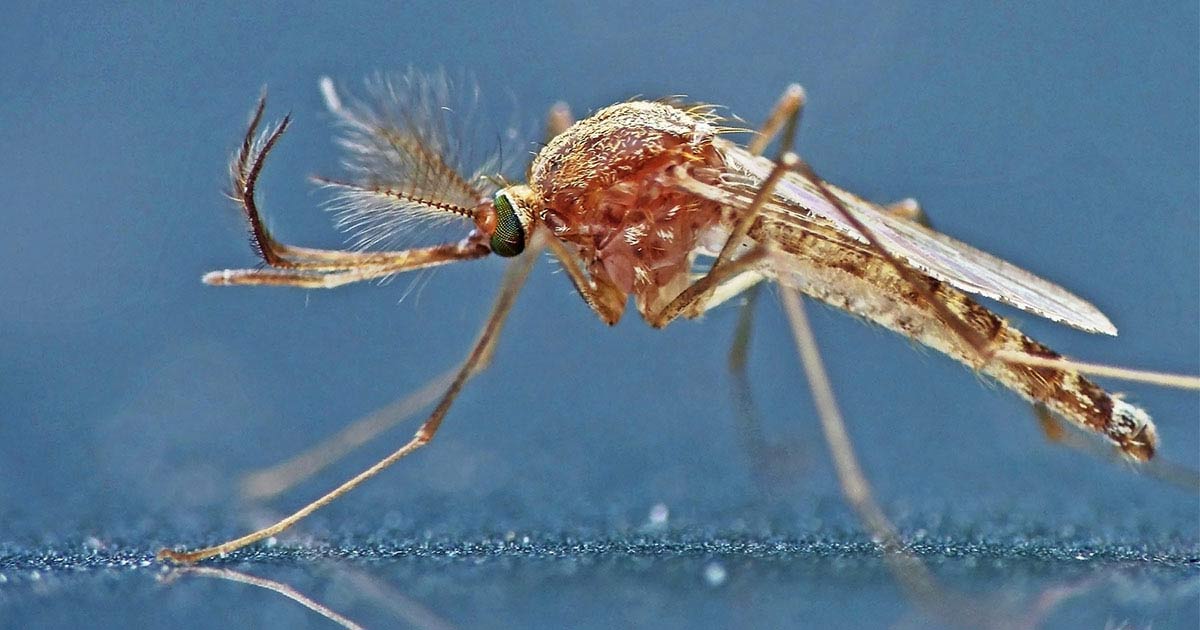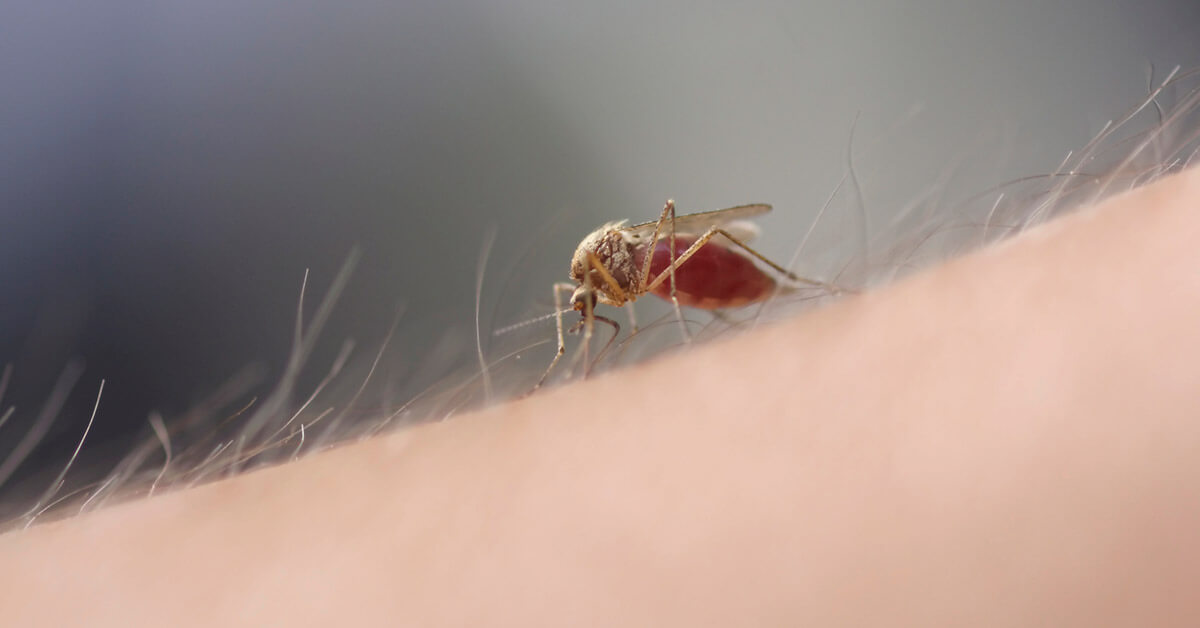Three Disease-Transmitting Mosquitoes You Should Know
From increased world travel to global warming trends, many factors have combined to increase the risks of mosquito-borne diseases in the United States. Mosquito experts suggest that learning mosquito basics, including how to identify mosquitoes associated with specific diseases, is extremely helpful in controlling mosquitoes and reducing the risk of diseases these pests transmit.
The Centers for Disease Control and Prevention (CDC) note that major mosquito-borne diseases in the United States trace back to just three primary mosquito categories: Aedes, Culex and Anopheles mosquitoes.1 Learning to recognize these potentially harmful mosquitoes and distinguish between them can help prepare you to take control of mosquitoes on your property and protect your family from their threat.
AEDES MOSQUITOES
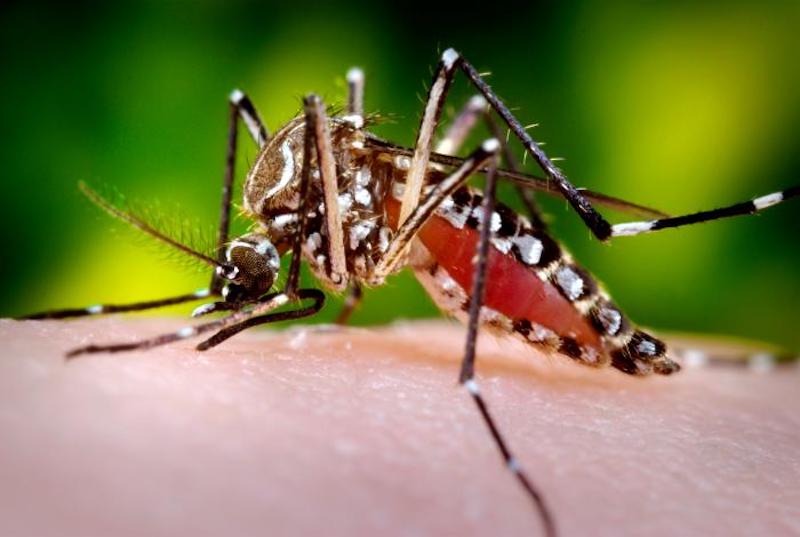
The Aedes aegypti mosquito has very distinctive black and white markings.
Aedes mosquitoes include several species behind some of the world's most significant mosquito-borne diseases, including dengue, Zika, chikungunya and yellow fever.2 This group includes two pests of special concern: the yellow fever mosquito, known by the scientific name Aedes aegytpi, and the Asian tiger mosquito, also known as Aedes albopictus. These exotic species are native to Africa and Asia, but they've expanded their range to tropical and subtropical areas around the world — and brought an increased risk of diseases with them. Aedes mosquitoes are now establishing throughout the Eastern seaboard, across the southern tier of the United States, and along the West Coast.
Aedes mosquitoes stand out from other types in several ways. Their black bodies bear striking white markings, and these pests primarily bite humans during daylight hours instead of dusk to dawn. They lay large groups of individual eggs on the wet, inside walls of water-holding containers, right above the water line. White when laid, the eggs soon turn shiny black. Aedes mosquitoes have adapted very well to urban environments. They thrive in urban areas where small, water-holding receptacles such as flower vases and plant saucers create multiple breeding grounds.2
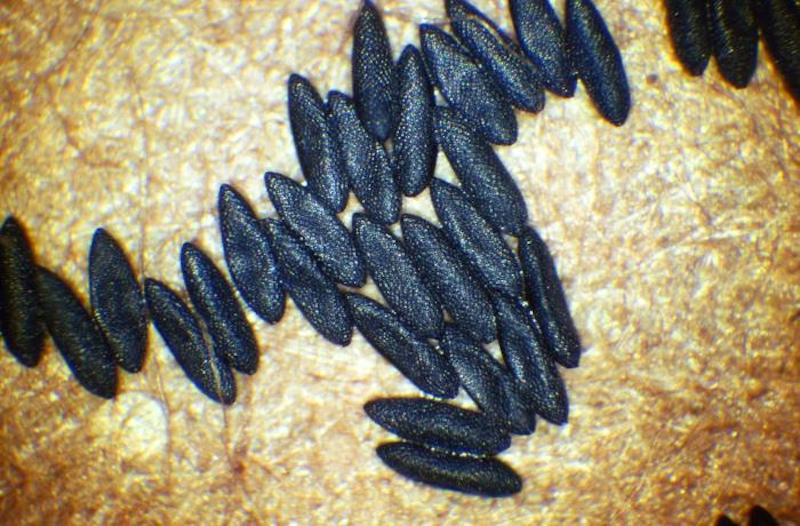
Aedes eggs become very dark and shiny.
CULEX MOSQUITOES
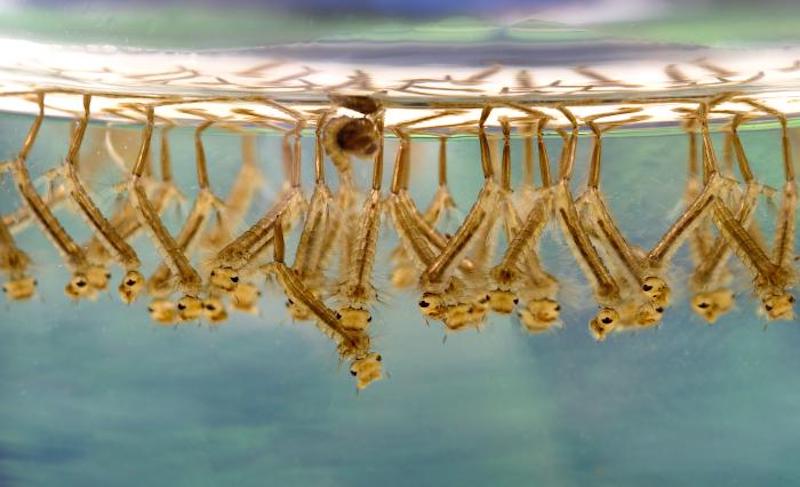
Common Culex mosquito larvae hang by distinct breathing siphons.
For most U.S. residents, the pests thought of as common mosquitoes fall in the Culex category. This large genus includes the Northern house mosquito, known by the scientific name Culex pipiens, and the Southern house mosquito, Culex quinquefasciatus. These common mosquitoes are the primary culprits behind the transmission of West Nile virus, a disease now established in all 48 contiguous states of the U.S. They also transmit dog heartworm, Eastern equine encephalitis and several other significant diseases.1 Culex mosquitoes occur worldwide, in all but the coldest regions.
As a group, Culex mosquitoes are unremarkable, brownish pests found in rural, agricultural settings and urban areas. They feed on birds, which are the primary carriers of West Nile virus, as well as people and other animals, including horses. Their most active biting times occur between sundown and sunrise. Culex mosquitoes lay clusters of white eggs on the water's surface. The clusters soon darken and float like rafts. Stagnant water in containers, ditches and ponds are favorite breeding spots for these pests.2
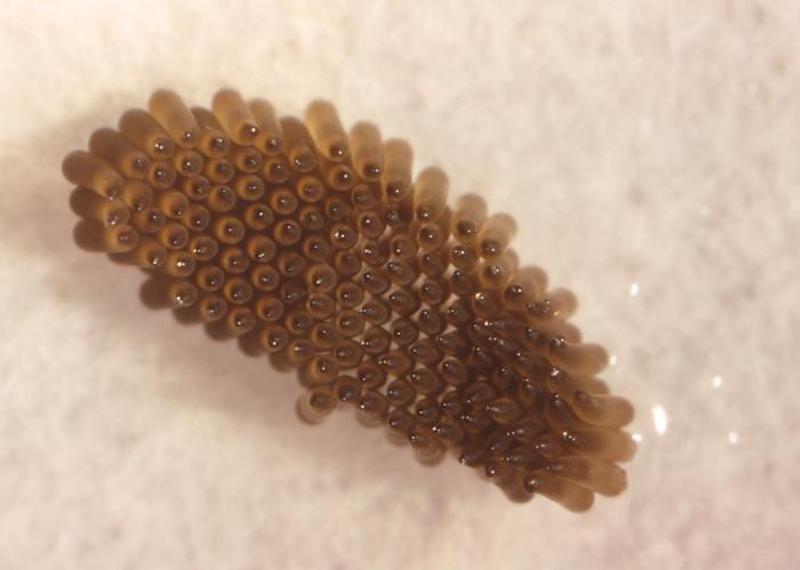
Culex mosquitoes lay rafts of clustered eggs.
ANOPHELES MOSQUITOES
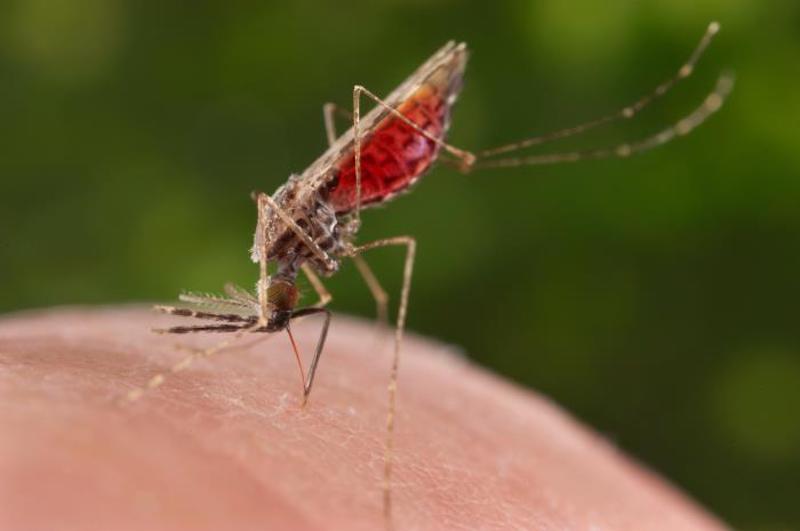
The Anopheles mosquito has an exaggerated, perpendicular feeding position.
Also known as malaria mosquitoes, this group includes the common malaria mosquito, known by the scientific name Anopheles quadrimaculatus. All mosquitoes have scales on their wings, but the scales on this thin, spindly-legged, deep brown species form four dark wing patches. Anopheles mosquitoes are the only mosquitoes that transmit the parasite that causes malaria. These pests feed on people and other animals during evening hours. They're concentrated in the Southeast, but they have spread through much of the eastern United States.2
Anopheles mosquitoes lay individual white eggs on the surface of standing water. The eggs, which soon darken, have unique "floats" attached that keep them on the surface —not the container sides — until they hatch. Unlike more common mosquitoes, malaria mosquito larvae don't hang perpendicular below the water's surface by a breathing siphon; they lay parallel to the surface, right below it. Adults also have an unusual feeding and resting position. They hold their bodies at a sharp angle, with their rears raised.
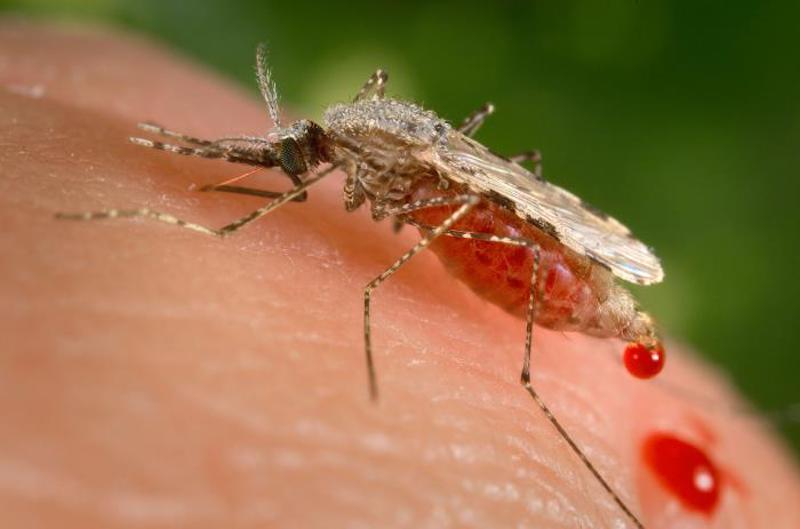
The Anopheles mosquito has an exaggerated, perpendicular feeding position.
EFFECTIVE PREVENTION AND CONTROL
Learning to recognize mosquitoes capable of transmitting diseases can help you assess the risk to your family, including your pets, and follow through with effective mosquito controls. As part of an integrated mosquito management plan, the CDC recommends inspecting your property regularly, eliminating unnecessary water sites, and treating mosquitoes in both their larval and adult stages.3 This two-pronged approach to treatment prevents mosquito larvae from maturing to the breeding and biting stage and controls those mosquitoes that do.
With Amdro Quick Kill®, you can fight disease-transmitting mosquitoes as well as nuisance mosquitoes that put a damper on your outdoor activities. Products such as Amdro Quick Kill Insect Killer for Lawn & Landscape Ready To Spray or Amdro Quick Kill Insect Killer for Lawn & Landscape Concentrate kill adult mosquitoes in the areas around your home.
Armed with knowledge and Amdro brand premium pest control products, you can do your part to stop disease-transmitting mosquitoes, protect your family, and help limit the spread of mosquito-borne diseases.
Always read product labels thoroughly and follow instructions.
Amdro and Amdro Quick Kill are registered trademarks of Central Garden & Pet Company.
++Brand name does not refer to product efficacy as it is part of the registered name
Sources:
1. Centers for Disease Control and Prevention, "Other Mosquito-Borne Diseases," March 2106.
2. C.R. Connelly, et al., "Florida Resident's Guide to Mosquito Control," University of Florida IFAS Extension and the U.S. Department of Agriculture, 2014.
3. Centers for Diseases Control and Prevention, "Integrated Mosquito Management," September 2017.

